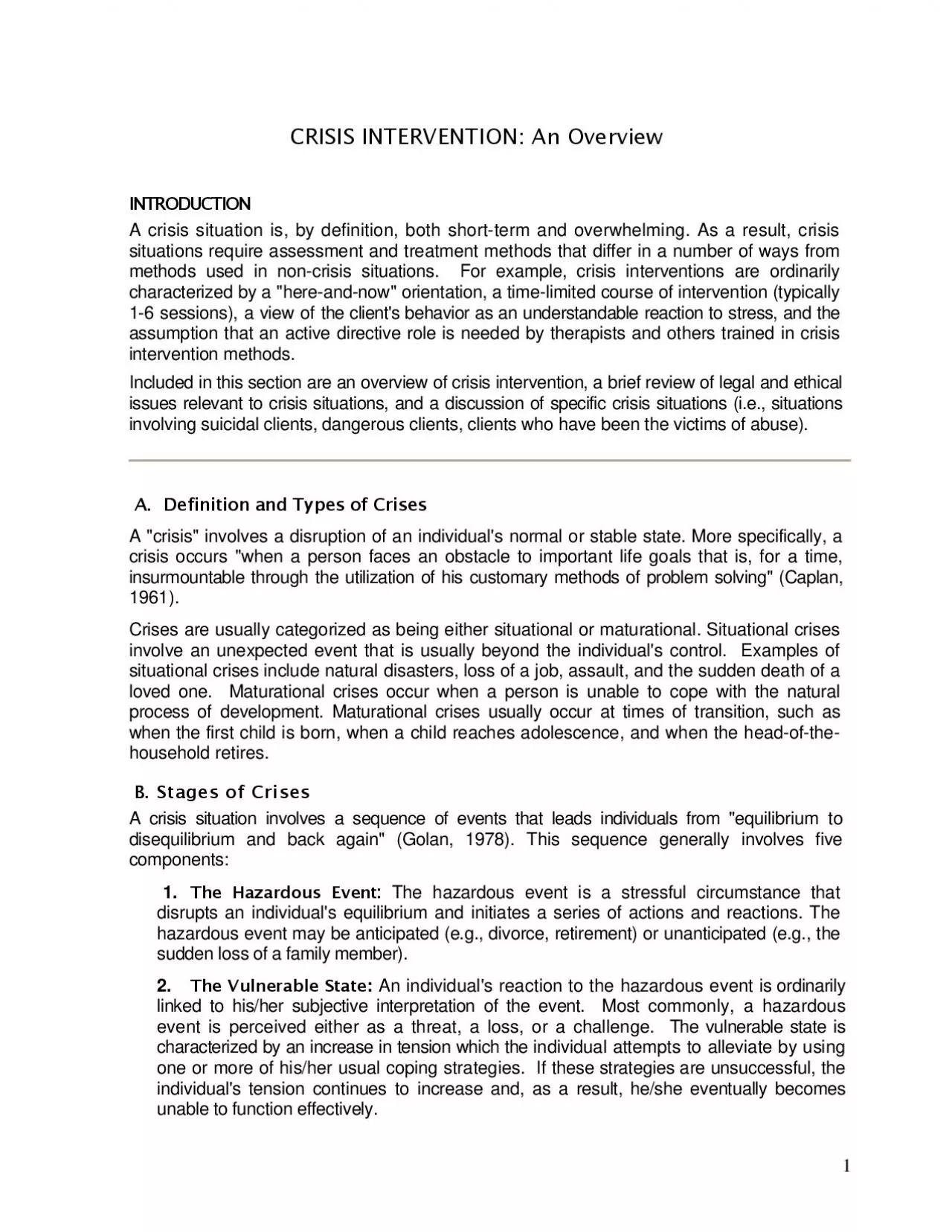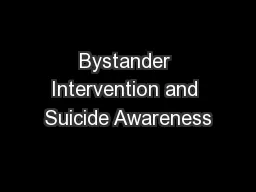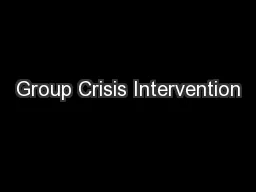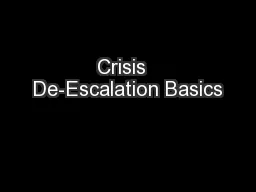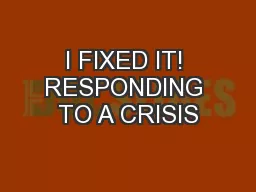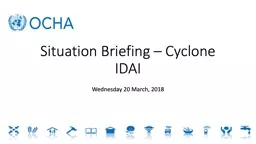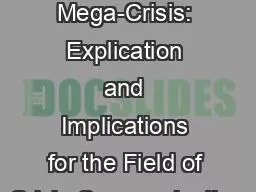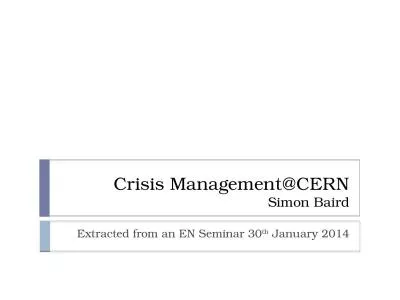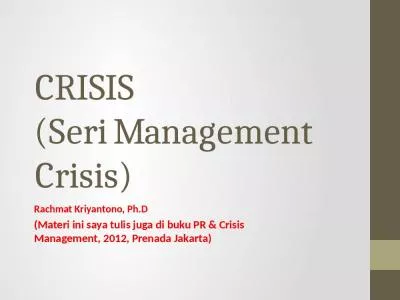PDF-CRISIS INTERVENTION An Overview INTRODUCTION A crisis situation is by
Author : cappi | Published Date : 2021-10-04
Definition and Types of Crises A crisis involves a disruption of an individuals normal or stable state More specifically a The Precipitating FactorThe precipitating
Presentation Embed Code
Download Presentation
Download Presentation The PPT/PDF document "CRISIS INTERVENTION An Overview INTRODU..." is the property of its rightful owner. Permission is granted to download and print the materials on this website for personal, non-commercial use only, and to display it on your personal computer provided you do not modify the materials and that you retain all copyright notices contained in the materials. By downloading content from our website, you accept the terms of this agreement.
CRISIS INTERVENTION An Overview INTRODUCTION A crisis situation is by: Transcript
Download Rules Of Document
"CRISIS INTERVENTION An Overview INTRODUCTION A crisis situation is by"The content belongs to its owner. You may download and print it for personal use, without modification, and keep all copyright notices. By downloading, you agree to these terms.
Related Documents

